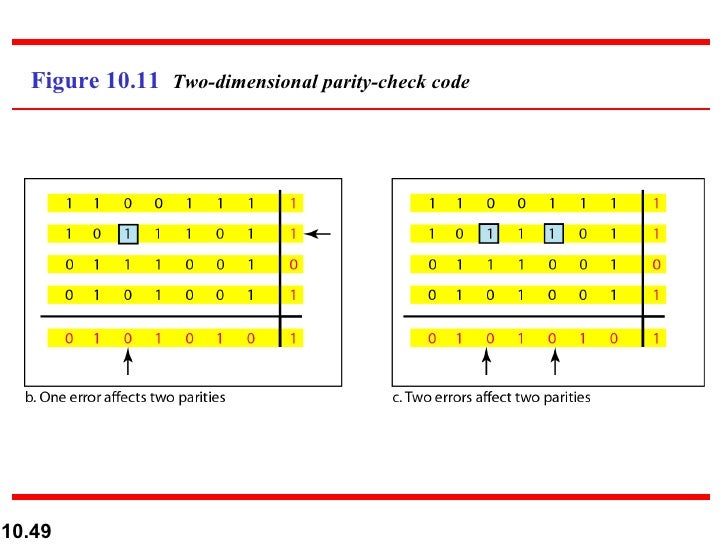- 2d Parity Check Program Code
- 2d Parity Check Program Cal
- 2d Parity Check Program Calif
- 2d Parity Check Program Compatibility
Two Dimensional Parity can detect as well as correct one or more bit errors. If a one or more bit error takes place then the receiver will receive the message with the changed parity bit. It indicates that some error has taken place which means the error is detected.

TWO DIMENSIONAL PARITY: WORKING
The numbers behind the 'bars/underscores' are the parity-check bits, it means that in each column/row is even count of number 1. So the minimum distance equals to 2. That means according to the rule t. Introduction to 2-D Arrays in C. Arrays can be defined as collection of elements or data that are of similar or different data types, which is implemented in one or more dimensions with respect to the requirement provided to the program developer. 2-D or two dimensional array are represented as ‘datatype variablenn’, where datatype can be an int, char, etc, and the nn is n.n to. To apply the 2D-parity in a typical memory, the Y-axis parity bits (address 18) are stored in the address behind the program codes (address 0 to 16), and X-axis parity (address 17). Active Oldest Votes. To find the matching pairs in columns, scan over each row except the last, and for each column, compare the value at array row col with the value at array row+1 col and report matches. To find the matching pairs in rows, scan over each column except the last, and for each row, compare the value at.

We will make a Two Dimensional array from the message bit. After that, according to the even or odd parity, We will fill make the last column and last row of the matrix.
2d Parity Check Program Code
Total Parity Bits – i + j + 1 (Row+Column+1)
Here Parity Bit = 3 + 5 +1 = 9
One point is to be Remember that the Value of (i, j ) should be of message array i.e. inspite of having the value of i = 4, j = 6 (which is of array with parity bits). we will take value of message array i.e i=3, j=5.
Row and column parity bits are known as Redundant Bits i.e i+j+1.
The code that is to be transmitted will be the whole message included Redundant Bits.
For ex :
Now, this code is transmitted and reaches the receiver side, where the receiver will again form a similar Two Dimensional array.

CASES OCCURS IN TWO DIMENSIONAL PARITY
CASE 1 :
Suppose a bit is in error. Then it can be easily detected and the code is corrected. As shown in fig.
CASE 2 :
When two erroneous bits are detected and corrected. The undesired part is that two other bits also detected as an incorrect bit.

CASE 3 :
When odd no. of error takes place in a particular row or particular column.
CASE 4 :
When even no. of error takes place in a particular row.
CASE 5 :
Where the error is not detected so not corrected.
2d Parity Check Program Cal
DRAWBACKS
2d Parity Check Program Calif
- In some cases, an only odd number of bit errors can be detected and corrected but even number of errors can only be detected but not corrected.
- In some cases, this method is not able to detect even no bit error.
want to know more.
2d Parity Check Program Compatibility
A boolean matrix has the parity property when each row and each column has an even sum, i.e. contains an even number of bits which are set. Here's a 4 x 4 matrix which has the parity property:
1 0 1 0
0 0 0 0
1 1 1 1
0 1 0 1
The sums of the rows are 2, 0, 4 and 2. The sums of the columns are 2, 2, 2 and 2.
Your job is to write a program that reads in a matrix and checks if it has the parity property. If not, your program should check if the parity property can be established by changing only one bit. If this is not possible either, the matrix should be classified as corrupt.
The input file will contain one or more test cases. The first line of each test case contains one integer n (n<100), representing the size of the matrix. On the next n lines, there will be n integers per line. No other integers than 0 and 1 will occur in the matrix. Input will be terminated by a value of 0 for n.
For each matrix in the input file, print one line. If the matrix already has the parity property, print ``OK'. If the parity property can be established by changing one bit, print ``Change bit (i,j)' where i is the row and j the column of the bit to be changed. Otherwise, print ``Corrupt'.